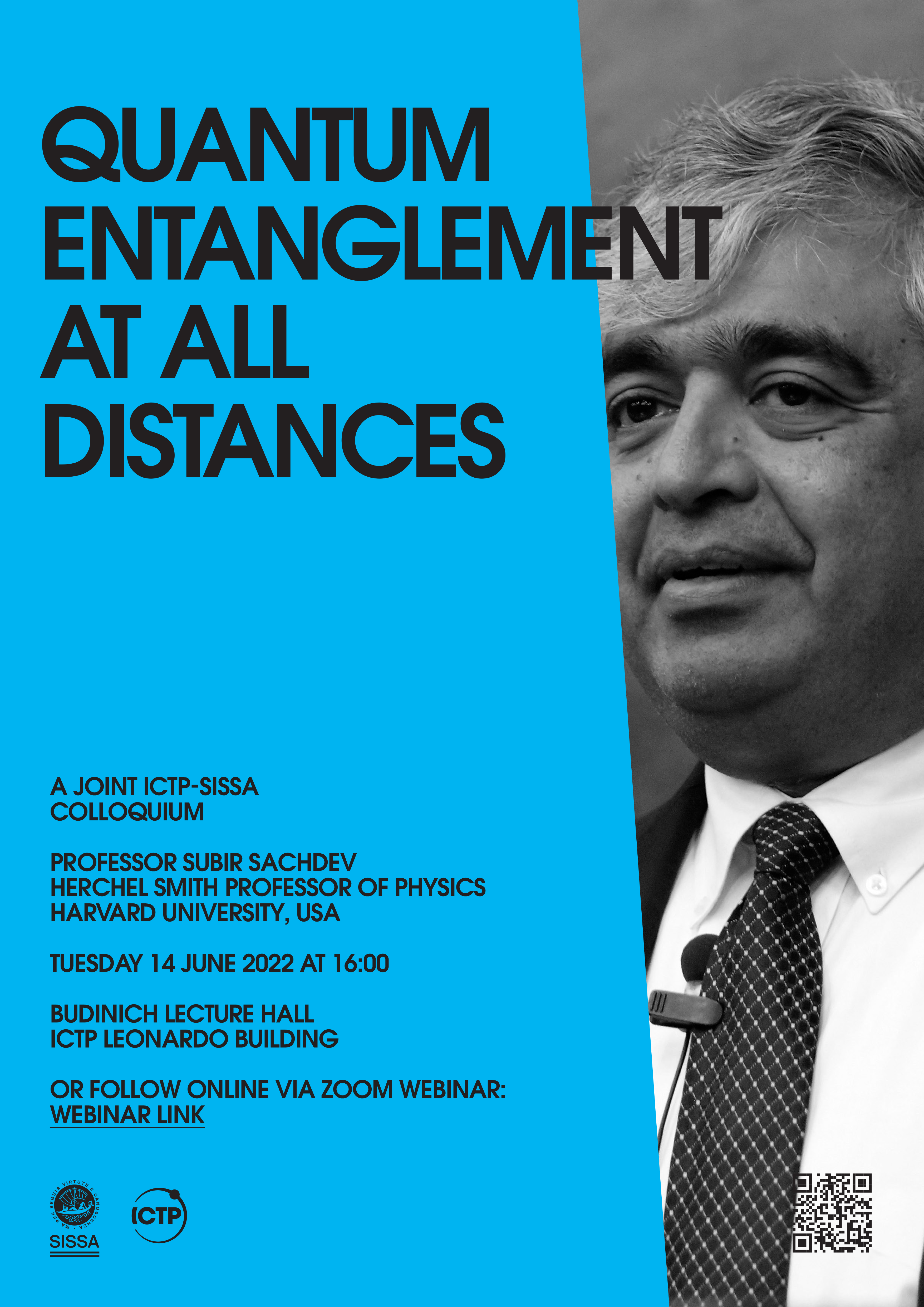Subir Sachdev is a condensed matter physicist well known for his research on quantum phase transitions and its application to a variety of quantum materials, such as the high temperature superconductors. His research seeks to illuminate the boundary between the everyday world we live in—in which many but not all phenomena can be explained through classical physics—and the subatomic world of quantum physics. These two worlds come together at a "quantum phase transition”, where there is a change in the macroscopic character of the quantum state describing a many-particle system, and manifestations of quantum entanglement appear naturally at long distances. His book Quantum Phase Transitions (Cambridge University Press, 1999 and 2011) has formed the basis of much subsequent research. More recently he pioneered the application of string theory to the study of quantum phase transitions in systems of ultracold bosons, and to the “strange metal” state found in many modern materials. Sachdev was educated in India before attending MIT and Harvard where he obtained his PhD degree in theoretical physics. He held professional positions at Bell Labs (1985–1987) and at Yale University (1987–2005), where he was a Professor of Physics, before returning to Harvard as Herchel Smith Professor of Physics. He also holds a visiting position as the James Clerk Maxwell Chair in Theoretical Physics at the Perimeter Institute. He is a member of the National Academy of Sciences, fellow of the American Physical Society and has been awarded several honors, among them the Lorentz Chair, Instituut-Lorentz, Leiden University in 2012, and the Salam Distinguished Lecturer at the International Center for Theoretical Physics, Trieste in 2014. He is a former Member of ICTP's Scientific Council.
Abstract of the Colloquium: Entanglement is the strangest feature of quantum theory, often dubbed ''spooky action at a distance’’. Quantum entanglement can occur on a macroscopic scale with trillions of electrons, leading to novel superconductors which can conduct electricity without resistance even at relatively high temperatures. These superconductors also display a “strange metal” regime in which individual electrons lose their identity. Related entanglement structures arise across the horizon of a black hole, and give rise to Hawking’s quantum paradox. I will introduce and describe these long-standing problems in two very different fields of physics, and review progress in resolving them using insights from the Sachdev-Ye-Kitaev model.


